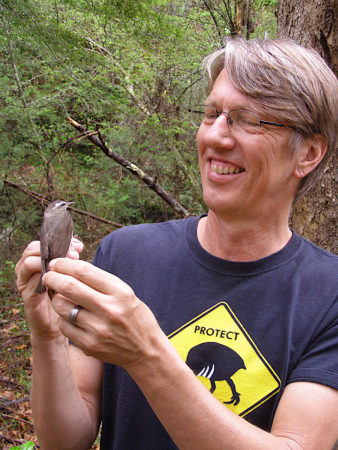
The Louisiana Waterthrush is a neotropical migratory warbler that links North America, where it breeds, to the Caribbean, where is spends the winter. Steven Latta PhD has worked on this species for more than a decade. Here he shares some fascinating insights into how water quality impacts the health and survival of this small bird, and what this means for people as well as birds.
Clean water is something that is essential to each and every one of us. There is, however, a rising tide of water quality threats facing Neotropical migratory birds – both in their North American breeding grounds and their Caribbean wintering spots. Water pollution and water diversions can wreak havoc on the quality of the water that supports plant, animal and aquatic life. This also negatively impacts the health and welfare of humans who also depend on that water resource.
I have used a migratory songbird, the Louisiana Waterthrush, for more than a decade to monitor changes in water quality, and to understand the impacts of water quality on birds and other life that depend on riparian ecosystems – that is, rivers, streams and wetlands.
Although somewhat reminiscent of a thrush, the Louisiana Waterthrush is actually a large, mostly terrestrial warbler. It is uniformly dark olive-brown above and white below, with dark brown streaks on its breast and sides, and flanks washed buffy. Distinctive field marks include a white supercilium (eyebrow stripe) which flares and broadens behind the eye, and an unspotted white throat. In both its breeding and wintering grounds, the waterthrush inhabits freshwater streams and associated riparian vegetation in forested hills and mountains. The Louisiana Waterthrush is considered a Species of Conservation Concern in several Bird Conservation Regions. Its dependence on a specialized habitat, now threatened by a number of environmental stressors, makes the species more vulnerable.
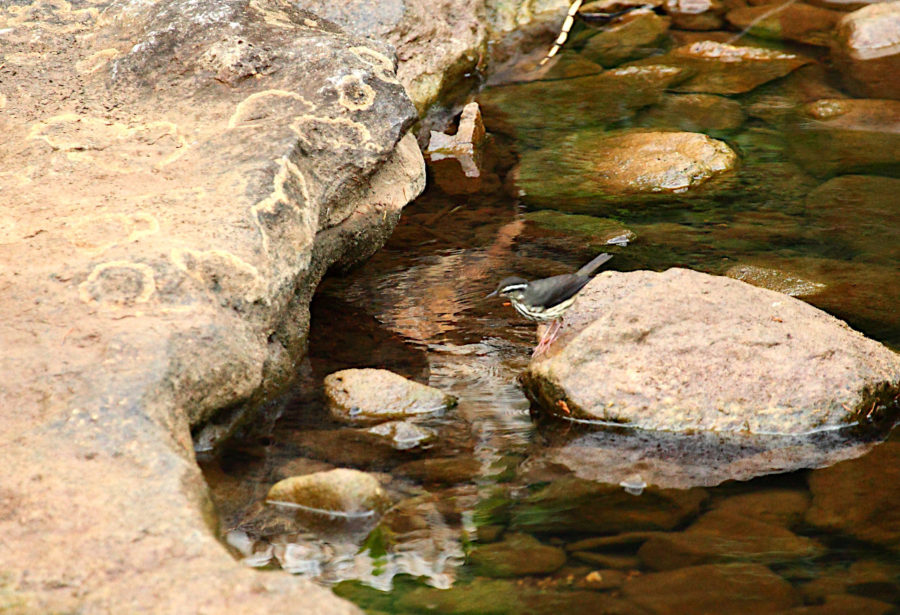
Waterthrush Warnings
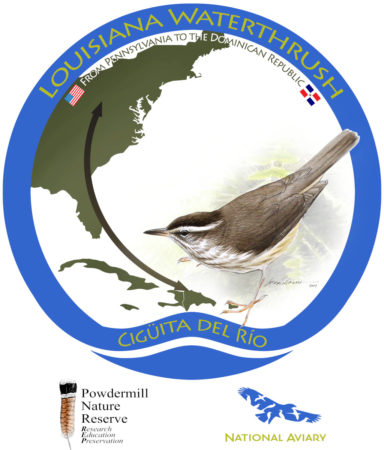
In the Caribbean, Louisiana Waterthrush are solitary and territorial. They forage mostly on the ground by walking in a deliberate manner along the water’s edge, jumping over obstacles, characteristically bobbing and teetering, as they capture aquatic insects and similar prey.
I have worked closely with my colleagues, Danilo Mejía and Maria Paulino, from the Dominican environmental organization, Grupo Acción Ecológica, in a long-term study of this charismatic species. Every year, our work has taken us from studies in wintering areas in the Cordillera Septentrional of the Dominican Republic, to research in the breeding grounds in the Laurel Highlands of Pennsylvania.
At both ends of the annual cycle, we have shown how the waterthrush can serve as a warning sign, pointing to the deteriorating condition of waterways, and the presence of toxins and harmful chemicals. In areas where the bird breeds such as Pennsylvania, water quality is affected by acid precipitation, acid mine drainage from abandoned coal mines and agricultural run-off. Most recently. metals associated with hydraulic fracturing for natural gas deposits have impacted the condition of the fresh water. On the wintering grounds, the sites we visit suffer adverse effects from sedimentation and run-off from agriculture and human settlements.
Water Quality: A Critical But Deteriorating Factor
By tracking nesting, breeding success, and survival of individual birds, we have been able to quantify the impacts of reduced water quality. Contamination may directly impact the Louisiana Waterthrush. For example, we have shown that because of its position at the top of the food chain along rivers and streams, the waterthrush will accumulate within its body the metals associated with hydraulic fracturing of deep shale layers for natural gas. Studies with our collaborator, Mack Frantz, have further suggested that this shale gas development may even result in epigenetic effects on gene expression in waterthrush. This means there may be changes in the genetic structure itself that may affect long‐term population survival and fitness.
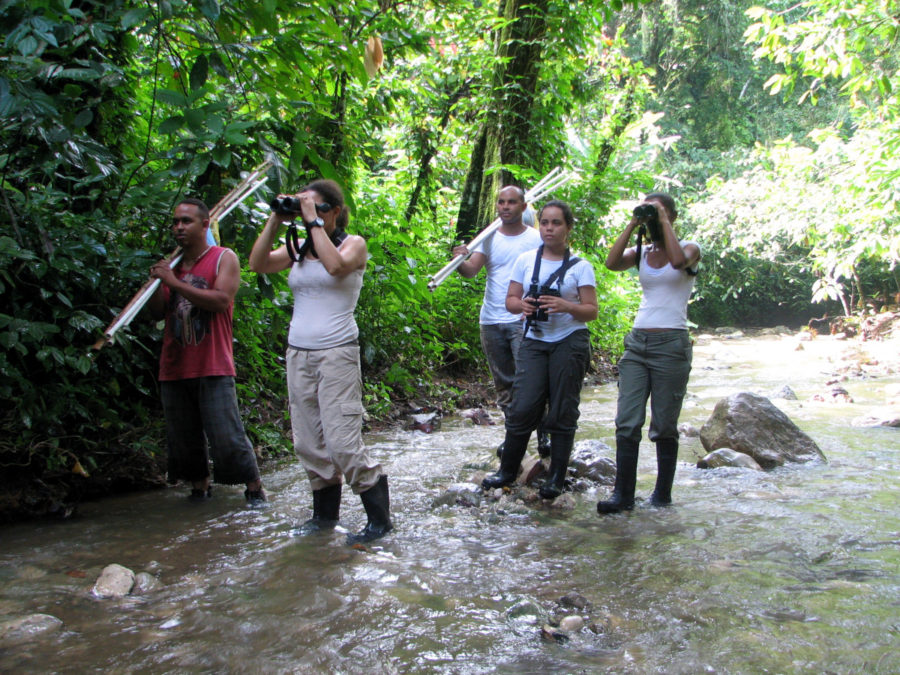
But reduced water quality can also have more subtle effects on birds. For example, Louisiana Waterthrush that nest on acidified streams are fewer in number and hold larger territories, presumably because they need more space to find enough food. Notably, the birds in contaminated areas delay nesting, producing fewer, smaller chicks, and fewer of these nesting adults return to the same stream the following year. These results suggest that waterthrush suffer pronounced declines in populations as the result of poor water quality.
A similar situation exists on the Caribbean wintering grounds. Louisiana Waterthrush on lower quality streams require longer territories, and pass the winter in poorer body condition. Fewer birds from low quality territories return the following year as compared to high quality territories. This suggests that reduced water quality in wintering grounds also reduces the birds’ survival rates.
How Does Poor Water Quality Affect the Birds?
Collaborating with two graduate students, we have been able to show why water quality affects Louisiana Waterthrush so dramatically. Brian Trevelline and Brandon Hoenig have combined traditional habitat sampling with advanced molecular techniques such as DNA metabarcoding of feces to analyze diets. They have demonstrated that when water quality declines with increased acidity or other contamination, the availability of preferred aquatic insect prey, such as mayflies, declines. The waterthrush compensate for this by altering their typical aquatic foraging behavior and diet. They venture further away from the stream to consume more terrestrial prey such as crickets, moths and spiders.
While these findings suggest that migrants may be able to adapt to environmental degradation, such behavioral changes may carry additional costs. Alternative food sources may have less nutritive value, resulting in physiological impacts on nestlings or adults. The breeding season is one of the most energetically demanding periods for birds; flying further away from the nest in search of alternative food in unfamiliar places could incur physiological costs. Moreover, it makes the predation of eggs, nestlings, or even adult birds more likely.
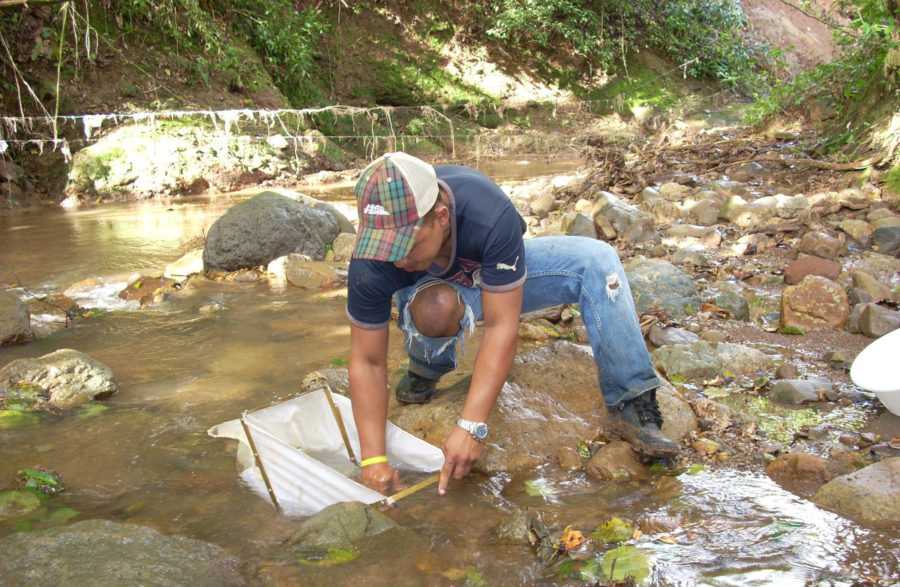
“You Are What You Eat:” The Waterthrush’s Evolving Diet
On the Dominican wintering grounds we also found shifts in diet among the streams that form the birds’ habitat. The diet of Louisiana Waterthrush in the Caribbean consists of fewer aquatic prey species and more terrestrial beetles, flies, and caterpillars. While the wintering waterthrush appears to feed on a wider range of species, these data suggest that on the wintering grounds, it is more of a dietary generalist. This highlights the importance of studying birds across their entire annual cycle to better understand their ecology and conservation needs.
These changes in the birds’ diet, which depend on the quality of habitat and the seasons, have vitally important consequences. On the breeding grounds, we have shown that nestlings from high quality streams that feed largely on mayflies grow faster and larger, and this has survival consequences. On the wintering grounds, variation in diet is also thought to impact survival. We showed that birds occupying higher quality territories with better food resources achieve a better body condition (i.e., they gain more muscle and fat) during the overwinter period. Body condition, in turn, was important in determining whether birds return the following winter, with the healthier birds returning at higher rates.
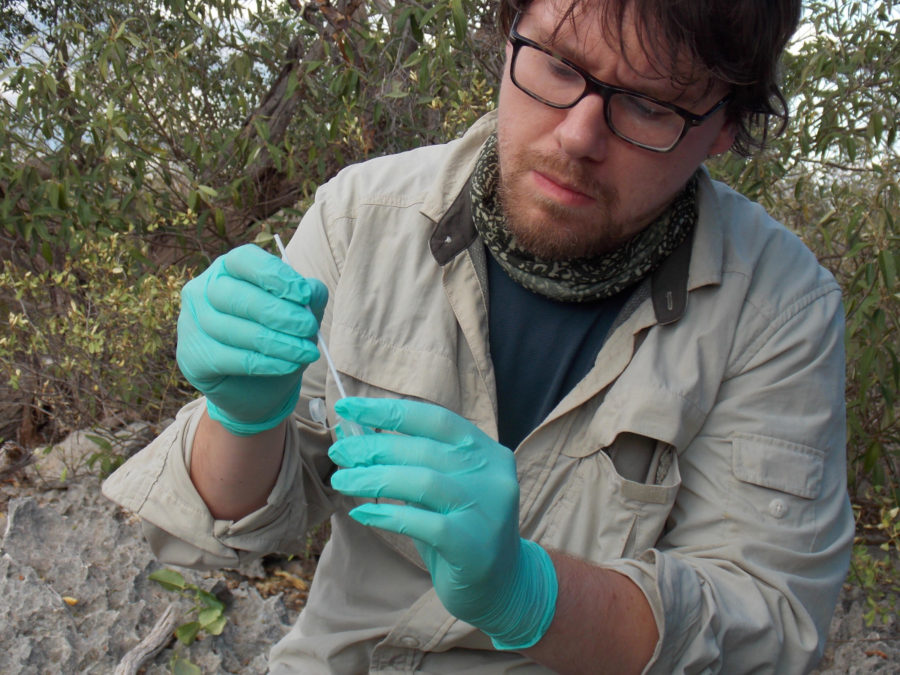
Good Quality Fresh Water: Important for the Birds, and Humans Too
This body of work links water quality to availability of preferred food resources. Our findings provide linkages among events during the breeding season and the overwintering period that affect the birds’ physiological condition, reproductive success, and annual survival. These studies show that changes in water quality from human activities, impacting the aquatic creatures that form the birds’ diet, can carry over across seasons. These changes accumulate over more than one life-history period, before manifesting themselves in a pattern of reduced survival.
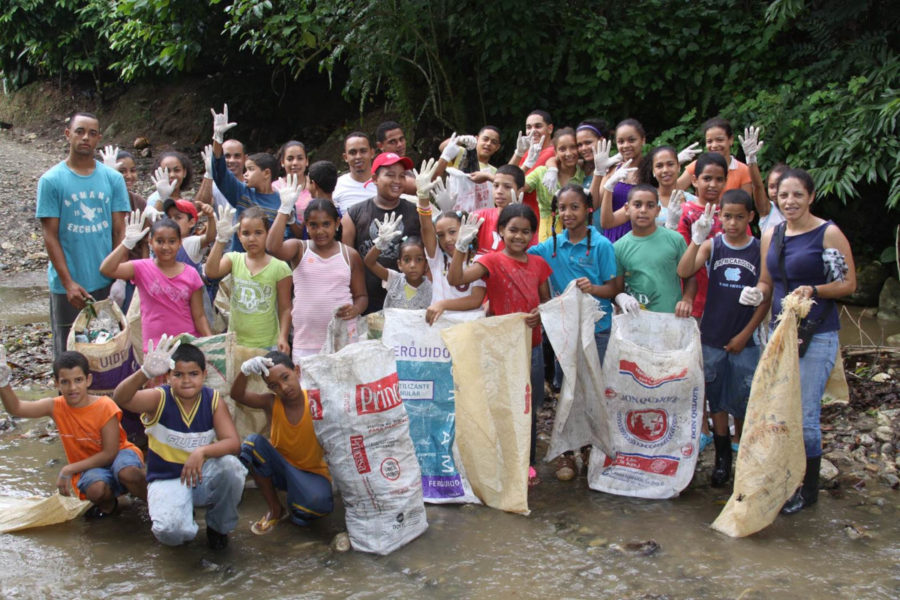
Taken together, these studies emphasize the critical importance of water quality as it affects aquatic insect prey and as a result, impacts Louisiana Waterthrush at both ends of its annual migratory cycle. However, water quality also affects human communities. This is a message we have communicated through annual summer fairs and other activities in rural communities near our Dominican stream sites. Clean water is something that is essential to each and every one of us; we are pleased to be using birds as a tool, helping to protect watersheds and water quality across the range of the Louisiana Waterthrush.
Dr. Steven C. Latta is the Director of Conservation and Field Research at the National Aviary in Pittsburgh. He obtained his Ph.D. in Avian Ecology from the University of Missouri-Columbia. He has worked in the Caribbean islands and Latin America for more than 25 years where his research has focused on the winter ecology of migratory birds, and understanding how migrant and resident species respond to natural and anthropogenic changes to their habitat. Dr. Latta has authored several books on the birds of Hispaniola, has published over 125 articles and book chapters, and is dedicated to training young biologists in developing countries in field research and monitoring techniques, and to educating the general public on the importance of conservation.
SELECTED PUBLICATIONS from Steven Latta:
Almonte-Espinosa, H. and S. C. Latta. 2011. Aspectos del comportamiento de forrajeo de la cigüita del río Parkesia motacilla (Aves: Passeriformes: Parulidae) en época no reproductiva. Novitates Caribaea 4:100-108.
Frantz, M. W., P. B. Wood, S. C. Latta, and A. Welsh. 2020. Epigenetic response of Louisiana Waterthrush (Parkesia motacilla) related to shale gas development. Ibis 162(4):1211-1224. https://doi.org/10.1111/ibi.12833
Latta, S. C. and R. S. Mulvihill. 2010. The Louisiana Waterthrush as an indicator of headwater stream quality in Pennsylvania. Pp. 246-258 in S. K. Majumdar, T. L. Master, M. C. Brittingham, R. M. Ross, R. S. Mulvihill, and J. E. Huffman (eds.), in Avian ecology and conservation: A Pennsylvania focus with national implications. The Pennsylvania Academy of Science, Easton, PA.
Latta, S. C., L. C. Marshall, M. W. Frantz, and J. D. Toms. 2015. Evidence from two shale regions that a riparian songbird accumulates metals associated with hydraulic fracturing. Ecosphere 6 (9):1-10. http://www.esajournals.org/doi/pdf/10.1890/ES14-00406.1
Latta, S. C., S. Cabezas, D. A. Mejia, M. M. Paulino, H. Almonte, C. Miller-Butterworth, and G. R. Bortolotti. 2016. Carry-over effects provide linkages across the annual cycle of a Neotropical migratory bird, the Louisiana Waterthrush. Ibis 158:395-406
Mattsson, B. J., S. C. Latta, R. J. Cooper, and R. J. Mulvihill. 2011. Latitudinal variation in reproductive strategies by the migratory Louisiana Waterthrush. Condor 113:412-418
Mulvihill, R. S., S. C. Latta, and F. L. Newell. 2009. Temporal constraints on the incidence of double brooding in the Louisiana Waterthrush (Seiurus motacilla). The Condor 111:341-348
Mulvihill, R. S., F. L. Newell, and S. C. Latta. 2008. Effects of acidification on the breeding ecology of a stream-dependent songbird, the Louisiana Waterthrush (Seiurus motacilla). Freshwater Biology 53: 2158-2169.
Trevelline, B., T. Nuttle, B. A. Porter, N. L. Brouwer, B. D. Hoenig, Z. D. Steffensmeier, and S. C. Latta. 2018a. Stream acidification and reduced aquatic prey availability are associated with dietary shifts in an obligate riparian Neotropical migratory songbird. PeerJ 6:e5141; DOI 10.7717/peerj.5141
Trevelline, B. K., T. Nuttle, B. D. Hoenig, N. L. Brouwer, B. A. Porter, and S. C. Latta. 2018b. DNA metabarcoding of nestling feces reveals provisioning of aquatic prey and resource partitioning among Neotropical migratory songbirds in a riparian habitat. Oecologia 187:85-98
Trevelline, B. K., S. C. Latta, L. C. Marshall, T. J. Nuttle, and B. A. Porter. 2016. Molecular analysis of nestling diet in a long-distance Neotropical migrant, the Louisiana Waterthrush (Parkesia motacilla). Auk 133:415-428.
